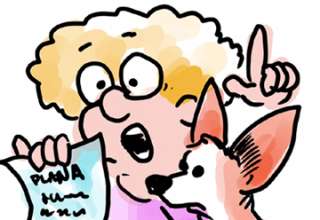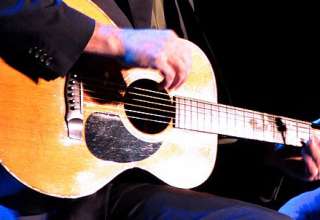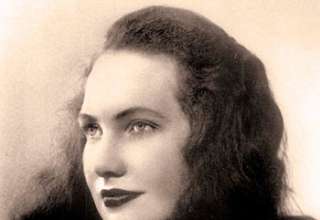Courtesy Kaila Yu
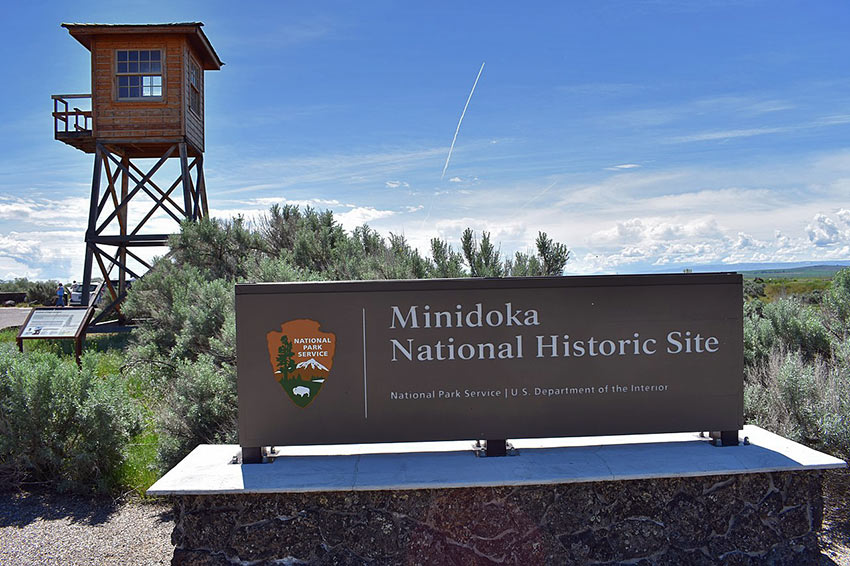
The importance of honoring Asian American history is especially timely with the disturbing rise in anti-Asian hate during the pandemic. Many Americans are not aware that anti-Asian hate has been taking place since the early 1800s and aren’t taught about Asian American achievements. Several national parks honor the considerable contributions that Asian Americans have made throughout U.S. history, from building the transcontinental railroad to fighting in the military in World War II. In honor of the upcoming Asian/Pacific American Heritage Month, travelers can visit one of the 10 parks on this list tied to Asian/Pacific American history.
Make sure you read Ed Boitano’s Horrific Past: The 1849 California Gold Rush – on Traveling Boy
Minidoka National Historic Site
Racism against Asian Americans was exacerbated by the Pearl Harbor bombing even though it was already prevalent in the mid-1900s. Afterward, hatred and fear towards Japanese Americans reached a fever pitch. As a result, President Roosevelt signed Executive Order 9066, under which 120,000 Japanese ancestry people were forcibly removed from their homes and moved into one of the 10 prison camps in the United States.9 These Japanese lost their homes, jobs, and valuables as a result. One of these camps was the Minidoka War Relocation Center in Jerome, Idaho. Two-thirds of prisoners were U.S.-born citizens.
Visit the Minidoka National Historic Site to learn about the experiences of the 13,000 Japanese Americans who were captive from 1942 to 1945. The harsh climate of the Idaho dessert was a difficult change as most Japanese were from the West Coast. Make sure to walk the self-guided, 1.6-mile trail to view the historic structures along the path. Additionally, there are 27 panels located throughout, which teach about internment camp life.
Make sure to bring comfortable walking shoes, water, and a hat as there is no shade on site. The road may not be well-maintained in the winter, so take note of the road conditions before visiting. The Minidoka National Historic Site is located in south-central Idaho between the cities of Twin Falls and Jerome. There is no fee to visit.
Yosemite National Park: Sing Peak
Few have heard of Tie Sing, but he is honored inside Yosemite National Park, about a four-hour drive from San Francisco, California. Sing was part of the team of cartographers who campaigned to preserve Yosemite and mapped out the park. To celebrate his memory, visitors can visit the mountain named after him: Sing Peak.
Sing was a Chinese American chef who was part of the Mather Mountain Party journey, which helped create a government agency to preserve significant land and historic sites in the United States. Sing’s legendary food fueled and sustained these men on their mission. Many party members wrote about his incredible efforts to serve fresh and healthy meals, including daily baked bread, even hauling extra equipment and ingredients with him for these elaborate presentations. Stephen Mather, who eventually became the director of the Park Service, recognized the great importance of Sing’s food, and said: “Give a man a poor breakfast after he has had a bad night’s sleep, and he will not care how fine your scenery is.”
In 1899, the United States Geological Survey named the mountain after Sing to commemorate his stellar service. This was especially significant as xenophobia against the Chinese was at an all-time high, especially after the 1882 Chinese Exclusion Act, a racist policy that ended immigration from China for the next 60 years.
Sing Peak is located in a less highly trafficked area of the park at the border of Ansel Adams Wilderness and southeast Yosemite. At 10,552 feet tall, it’s a challenging two-day trek to the top. Instead of going at it alone, you can join the Chinese Historical Society of Southern California on their annual Yosemite National Park Pilgrimage, which includes an optional side trip to Sing Peak. Additionally, park ranger Yenyen Chan is producing a Chinese history exhibit inside Yosemite that will open this year.
Kaloko-Honokohau National Historical Park
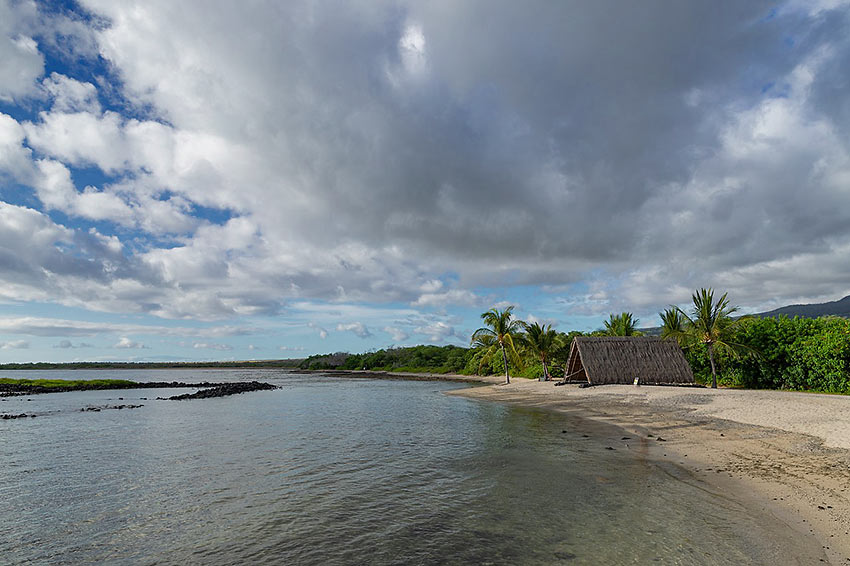
Located on the Island of Hawai’i, Kaloko-Honokohau National Historical Park was formerly the home of a flourishing Hawaiian ancient settlement. Hawaii’s fishponds (Loko i’a) are preserved at this park. Fishponds are an indigenous sustainable agriculture method to cultivate fish for the community. This is especially significant as there is currently a movement in Hawaii to restore Hawaii’s fishponds all over the state.
Besides marveling at the advanced engineering orchestrated by Native Hawaiians, look out for local wildlife. You might see native birds, Hawaiian monk seals, Hawaiian green sea turtles, and more. At Honokōhau Beach, visit the ancient Hawaii temple, which stands at the end of the beach.
The park is easily reached by driving south of the Ellison Onizuka Kona International Airport. Head a half-mile north from the Honokōhau Harbor entrance to reach Hale Ho’okipa (the visitor center). The weather is typically in the upper 80s Fahrenheit, and it’s recommended to visit in the morning and late afternoon. The entrance to the park is free.
Voyageurs National Park: Jun Fujita Cabin
Jun Fujita was a prominent Japanese American in the Midwest. His level of success was unusual for Japanese Americans in the early 1900s. He was a photographer for publications such as the “Chicago Evening Post” and worked for major corporations. At that time, less than five percent of Japanese Americans lived outside of the West Coast and Hawaii, so he was an anomaly. Fujita would often retreat to his remote cabin located near Rainier, Minnesota, for inspiration. The cottage is now situated inside Voyageurs National Park. The design of his one-room place is reminiscent of architecture design in Japan.
To visit the Jun Fujita Cabin, take a 20-mile boat ride east of the Rainy Lake Visitor Center. It’s located on a tiny, craggy island behind which is a towering rock formation. Voyageurs is a water-based national park, and many visitors bring their own watercraft, rent one, or take a park ranger boat tour. Summer is the best time to visit for hikes and boating excursions, but winter can be a great time as well, as the frozen lakes are ideal for snowmobiles, and you can explore the forests with snowshoes or skis. The park is located in Northern Minnesota and is accessible by car. However, to truly experience its full beauty, visit the park by boat.
Golden Spike National Historical Park: Chinese Arch
Located in Corinne, Utah, the Golden Spike National Historical Park commemorates the first transcontinental railroad achievement in the United States. Four emblematic spikes were driven into the park on May 10, 1869, to celebrate this groundbreaking accomplishment, and the Chinese Arch inside the park honors the hard work of the Chinese laborers that contributed but are often overlooked. The Central Pacific Railroad employed more than 11,000 Chinese workers, and Chinese crews still hold the record for laying the most miles of track in one day.
You can view the Chinese Arch, once known as the “Chinaman’s Arch,” by driving the Golden Spike’s East Auto Tour. There is also a plaque inside the park that honors the countless Chinese laborers who died during the railroad’s construction. During the park’s anniversary celebration on May 10, which is open to the public, the park places a memorial wreath in remembrance of the workers who died during the building of the railroad.
The Golden Spike National Historical Park can be reached via the Utah Highway 83. It’s located 32 miles west of Brigham City, Utah. The visitor center is open all year, and working replicas of steam locomotives from the 1860s are showcased from May to September. Park rangers also offer daily talks from May 31 to Sept. 31. Make sure to take one of the two self-guided auto tours available to visitors — the 14-mile West Auto Tour and the 2-mile East Auto Tour.
National Mall and Memorial Parks: Japanese American Memorial to Patriotism During World War II
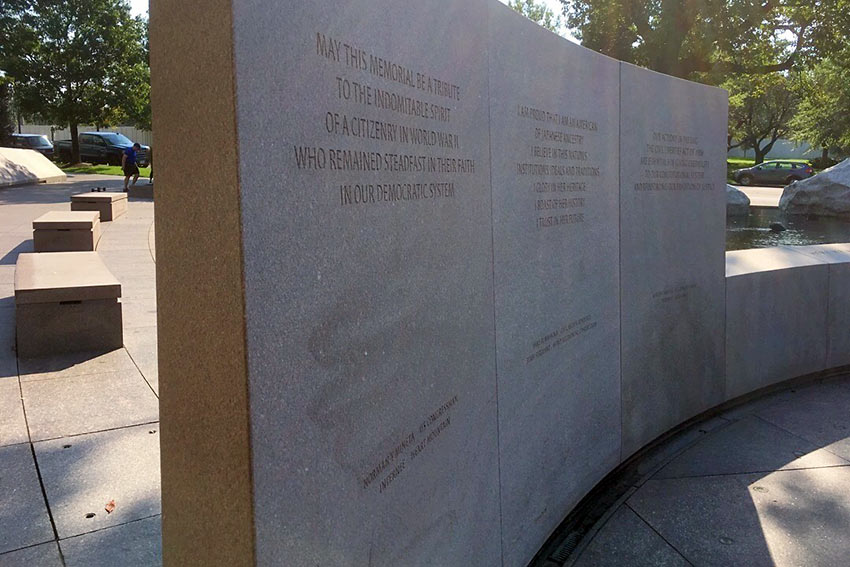
This memorial recognizes the Japanese Americans who served in the U.S. military during World War II and those who suffered in internment camps. Located on the intersections of New Jersey Avenue N.W., D Street, and Louisiana Avenue in Washington, D.C., it lists all internment camps, the number of prisoners at each, and a list of many of the Japanese Americans who died as soldiers. It was dedicated on Nov. 9, 2000, and designed by Davis Buckley and Nina Akamu.
Experts estimate that 33,000 Japanese Americans served in the military during WWII, with approximately 800 killed in action. The memorial is part of the National Mall and Memorial Parks, which encompasses several national parks and memorials in Washington, D.C. To visit the monument, walk south from the Union Station metro shop.
If you happen to be visiting around the first week of April, you can also view the blooming of the Cherry Blossoms around the Tidal Basin. These 3,000 trees were a gift from Japan in 1912 from Mayor Yukio Ozaki of Tokyo to celebrate the friendship between Japan and the United States. There is also an annual National Cherry Blossom Festival that takes place in late March or early April.
The War in the Pacific National Historical Park
This national park, which is separated into seven units all across Guam, memorializes the role of Guam in World War II. The United States took control of Guam in 1898 and developed the island to fortify its military presence in the Pacific. The day after the bombing of Pearl Harbor, the Japanese attacked the American military bases in Guam. The War in the Pacific National Historical Park was the site of many battlefields during the war.
Highlights of the park include several notable locations of WWII, including landing sites of the U.S. military, memorials, and battle sites. One famous memorial is the Agat Beach Unit, which features guns and cannons used in defense of the island. The T. Stell Newman Visitor Center is the newest addition to the park. In addition to scenic views of the ocean, it features exhibits, artifacts, and a riveting 10-minute movie called The Battle for Guam. Additionally, visitors can learn more about the history of native Guamanians.
To reach the park from the airport, take Route 1, Marine Corps Drive south until you reach the front gate of the Naval Station Guam. The best time to visit is during the dry season, January through May. There is no entry fee to see any of the sites.
Hawai’i Volcanoes National Park
This World Heritage site is rich in Hawaiian and Asian American history. Inside are countless archaeological sites such as ruins, fossilized footprints, and shelter caves.10 These remain from the “First Hawaiians” settlement on the island of Hawai’i, descendants of the ancient Polynesians who were the first settlers.
During the war, more than 100 Japanese people were interned at The Kilauea Military Camp located inside the park. Make sure to take the hike to Kahuku Ranch, located on the Mauna Loa Peak. It was previously home to the paniolo, Hawaiian cowboys who wrangled longhorn cattle for over 150 years. Don’t leave without viewing the volcanoes. There are two popular options, a self-guided Crater Rim Drive Tour, or drive the stunning 18.8-mile Chain of Craters road. Come prepared as there is no fuel, food, or water available on the path.
The Kīlauea Visitor Center is located a short distance from the entrance station on Crater Rim. Rain and fog are expected since the site is at a 4,000-foot elevation. It’s a 45-minute drive from Hilo, taking Highway 11 for 30 miles southeast. Make sure to bring hiking shoes, a jacket, hat, water, and umbrella.
National Park of American Samoa
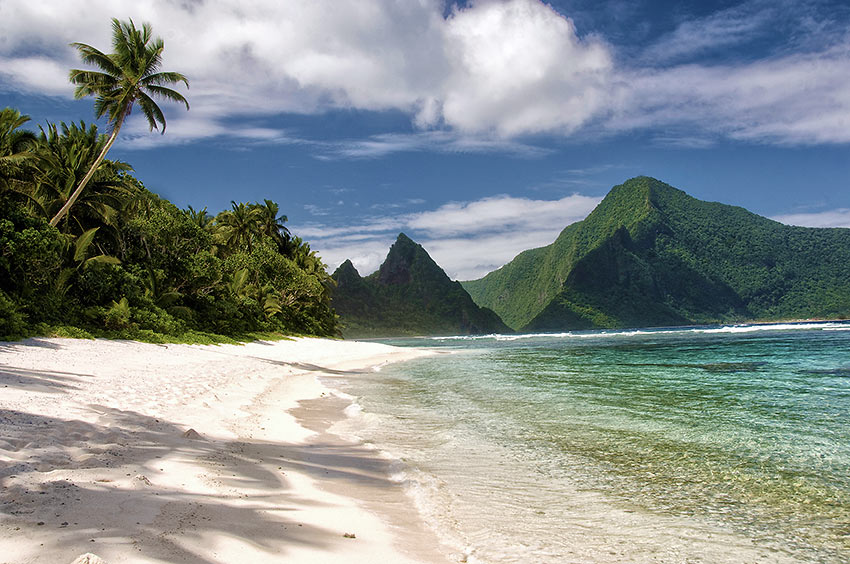
This 13,500-acre park preserves and protects the history of the 3,000-year-old Samoan culture. In 1988, the U.S. government commissioned the land for a national park. It’s the only American national park located south of the equator.11 One of the many highlights of visiting includes meeting the locals. Help support the local community while visiting by booking a local guide tour, homestay, or fishing with a local crew. Stop by the visitor center, which features exhibits of ancient handicrafts, tools, sea life, plant life, and more.
If you’re up for a challenge, hike the 3.8-mile Blunts Point/World War II Heritage Trail. On the way, you’ll pass World War II gun batteries and view the relics of the tramway that used to connect to the Mt. Alava summit. Be prepared as parts of the trail are so steep that there are ropes in place for climbing. Other outdoor activities include snorkeling and diving.
The park is located on the island of American Samoa, located approximately 2,600 miles southwest of Hawaii. Most guests fly into the capital city Pago Pago. From here you can easily reach the visitor center and exhibits located in the town. The climate is hot and rainy all year round, with a slight cooling from June to September. There are no fees or reservations required for visiting the park, which is open 24 hours.
Manzanar National Historic Site
Starting in 1942, the U.S. government detained more than 10,000 Japanese Americans at the Manzanar Relocation Center in Independence, California.12 Conditions at this particular camp were particularly harsh, and a riot occurred that left two prisoners dead.13 The camp was closed in 1945. All that remains of the center are a few towers, buildings, and a stone monument. It’s now a protected area dedicated to those who were wrongfully incarcerated here.
The visitor center features cabin replicas and many gut-wrenching stories from detainees. There is a 22-minute film available called “Remembering Manzanar” and a graphic featuring the names of more than 10,000 Japanese American prisoners. Many like to drive the 3.2-mile, self-guided driving tour that passes by buildings, exhibits, the cemetery monument, and more. If you have an entire day, take the time to walk around. Must-see exhibitions include the Children’s Village site, remnants of the hospital building, Japanese gardens, the baseball field, and more.
The driving tour and grounds are accessible every day from sunrise to sunset. The site is located off of U.S. Highway 395 and is located six miles south of Independence. Bring hiking shoes, extra clothing layers, water, and protection from the sun. Be prepared for unpredictable weather. There is no fee to visit.
Kaila Yu is an Asian American journalist and on-camera correspondent based in Los Angeles. She is also the co-author of the 30-Day Travel Challenge, TripSavvy.

